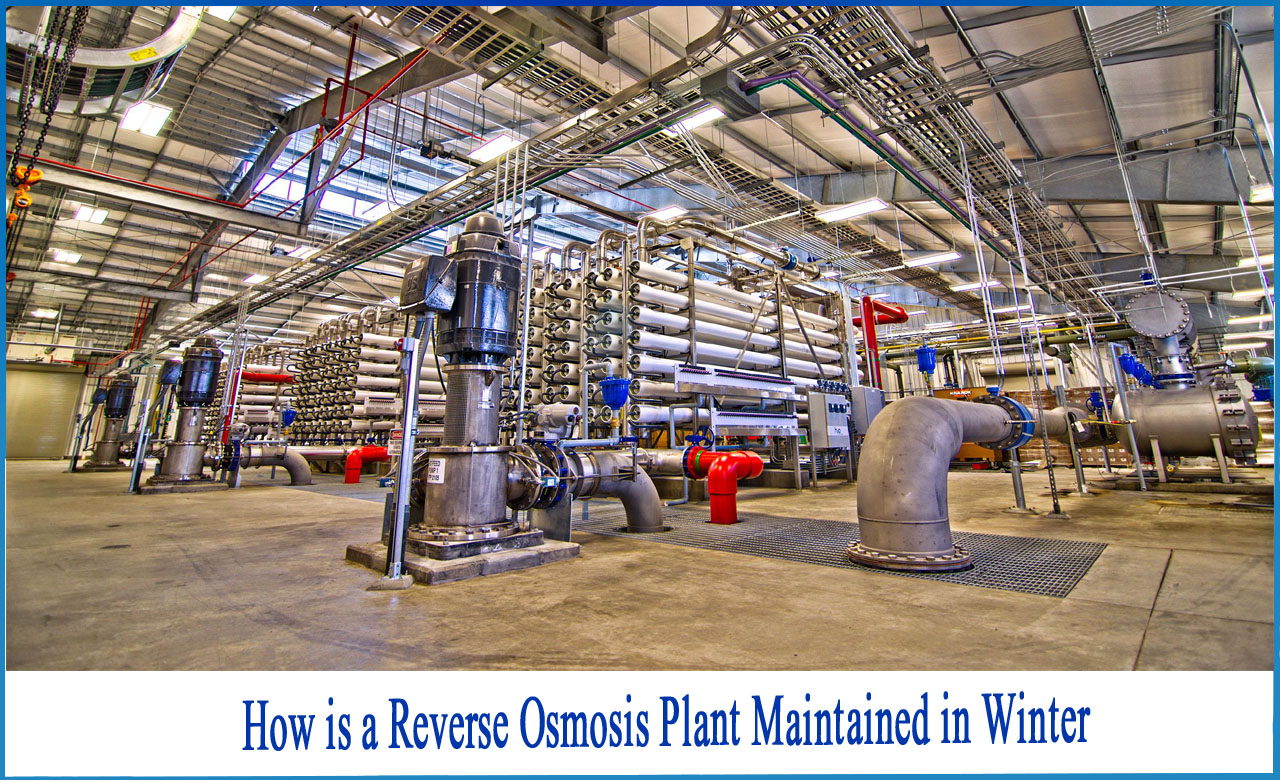What is Reverse Osmosis?
Reverse Osmosis (RO) is a water purification technology that uses a semi-permeable membrane.This membrane technique isn't strictly speaking a filtration system. In reverse osmosis, an applied pressure is utilized to counteract osmotic pressure, which is a colligative property governed by chemical potential, a thermodynamic parameter. Many types of molecules and ions can be removed from solutions using reverse osmosis, which is utilized in both industrial processes and the production of drinkable water.
It is well recognized for its application in purifying drinking water from seawater and in locations where viruses and chemicals such as metal ions, lead, arsenic, fluoride, radium, sulphate, magnesium, potassium, nitrate, fluoride, and phosphorus are present.
How is a Reverse Osmosis plant maintained in Winter?
It is important to maintain RO water systems in order to ensure that they perform properly. Most difficulties can be avoided by understanding and executing routine RO maintenance. It's more than just repairing and changing parts when it comes to RO maintenance. It entails taking actions to decrease or prevent problems from arising, as well as anticipating a problem before it occurs. It's also important to make sure the RO is appropriately applied to the project and that the feed water pre-treatment (as well as the feed water itself) is examined on a regular basis.
How do winters effect RO Plants?
The cold weather not only affects water that has already been cleansed and is ready to drink, but it also affects the purification process itself, and the reduction in temperature can have a significant impact on reverse osmosis production rates (water purification). The slower the water molecules move through the semi-permeable membrane, the colder it gets. This causes a dramatic decline in pure water production, which can take nearly three times as long to create the same volume.
Following steps are taken for the maintenance of RO systems in winters:
1. Keep them inside
If the unit is connected to an external source, you're probably already familiar with the challenges of battling the elements. The thin film composite membrane in the RO unit is particularly susceptible to frostbite. This delicate membrane is more vital than its flimsy appearance and suggests in filtering harmful contaminants such as dissolved compounds, nitrates, and phosphates.
It's only natural that you'd go to great lengths to keep it from freezing. It may seem simple, but the best thing you can do for your outdoor RO unit is bring it inside and let it warm up to room temperature.
2. Prohibited to use below zero
The RO temperature should not be below 0oCelsius. During the solidification process, the volume of water expands. If it freezes, all of the water purification equipment's pipelines, filter cartridges, membrane shells, and other components would break, causing machine damage and water leaks.
3. Don't move the RO after it has been installed
Because the totally sealed water channel in a RO plant is made up of multiple connectors, filter elements, and circuits, moving it can loosen the connector and cause the water purifier to leak.
Are you looking for the best commercial and industrial RO Plant manufacturers in India?
Netsol Water offers various range of Reverse Osmosis systems and their maintenance services. We as water treatment experts, can help you with water reuse and conservation in your operations, as well as the optimization of existing water production and the design and building of new, energy-efficient, and environmentally friendly water and wastewater treatment systems. Our products and solutions can provide the water your plant requires at every stage!
If you need an advice or assistance on selecting the best water and wastewater treatment unit, call us on +91-9650608473 or write us at enquiry@netsolwater.com



